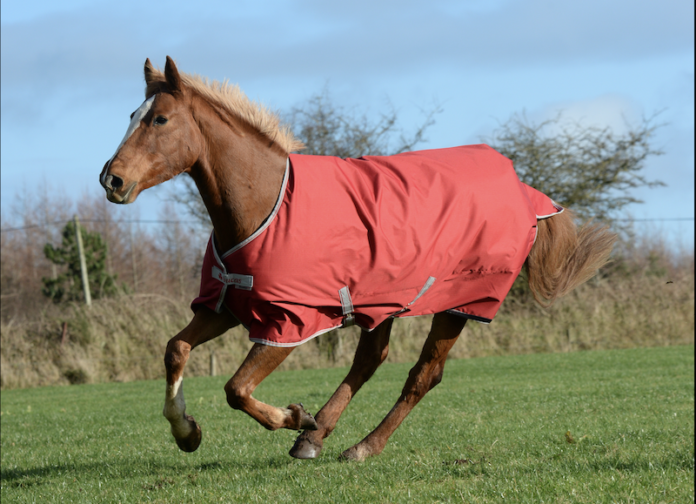Help you customers get the best from their turnout blankets with these handy hints from veterinarian and horseman Kieran O’Brien. CROSS SURCINGLES TOO LOOSE Horses commonly get their legs trapped in the cross surcingles because they are too loose. Regularly I see horses in fields with overly-loose surcingles flapping in the breeze. It’s an accident waiting to happen next time the horse rolls or lies down. The surcingles should fit snugly to the horse’s belly, with just enough room for the flat (not the width) of a hand to slide easily between the straps and the belly. ALWAYS USE A FILLET STRING On windy days, horses stand with their backs to the wind, and the fillet string on the turnout blanket stops it blowing up over the horse’s back. If the string isn’t high enough, the tail will come inside it when the horse moves around. If this happens, or if the string is broken or missing, horses can be suddenly startled by the blanket blowing over their backs, and they can rush forward, even going through fences. Also, the fillet string stops the neck piece from sliding forward on to the horse’s head. I have seen two cases where horses have been blinded by the neck piece coming over their eyes, in one case with fatal results. If a tail is outside the string, you need to tighten it. Horse owners leave fillet strings too loose because they consider them to be largely decorative, but they are wrong. BEWARE OF WITHER INJURIES Horses with high withers and little muscle around them are at risk of developing severe damage to the skin over the withers unless the blanket fits perfectly. Wither injuries are common where the blanket is too big and it slides backwards, causing the upper edge to press on the withers at the top. Sensitivity to finger pressure on the withers is a warning sign and must be addressed immediately. Sensitivity can be checked without removing the blanket, simply by regularly pressing down on the withers with the fingertips. The horse should show NO reaction to this. CHECK FIT AT THE SHOUDERS It should be possible easily to slide a hand inside at the front and down over the shoulders. I have seen the buckles injure the skin where the blanket was too small and too tight at the shoulders. Conversely, if it’s too wide at the shoulders, it slips backwards and can cause shoulder rubs. ADJUST LEG STRAPS CORRECTLY Leg strap rubs are common. It should be possible to pass a hand between the leg straps and the inside of the horse’s thigh, but they should not be too loose or legs can get caught up. The straps should always loop through each other. BEWARE OF ELECTRIC FENCES Hungry horses and ponies soon realise that the blanket protects them from being shocked by the fence, and they lean over it to get to grass on the other side. They can be become entangled in the fence or impaled by the poles. A quick way to deter this is to sew a piece of electric fence tape to the inside seam of the blanket’s neck and allow the free end of the tape to dangle in front where it will contact the fence. HOW HEAVY SHOULD THE BLANKET BE? Horses lose weight if they need to burn body fat to keep themselves warm. It’s important that overweight horses are not heavily rugged during the winter so we can exploit this fat-burning phenomenon to our advantage to help them slim. Many horses need only an unfilled or minimally filled rug. Horses are far more cold-resistant than we think, and certainly more cold-resistant than we are. |
| REMOVE THE RUG AT LEAST ONCE A WEEK Don’t assume everything is okay under there. Rugs must be removed at least weekly to check for rubs, rain rot and other problems. |

















